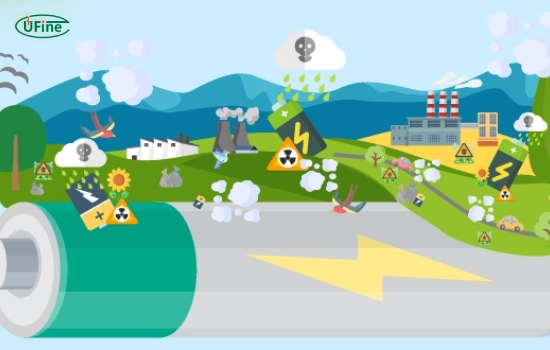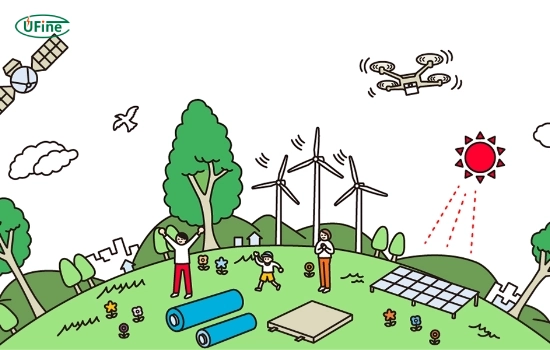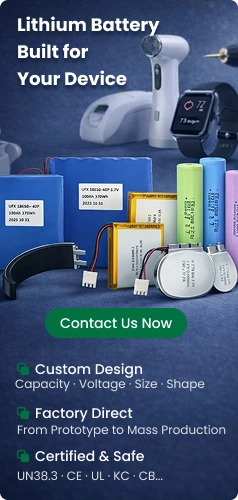
In the contemporary world, where environmental concerns are increasingly at the forefront, e-cycle or recyclable batteries have emerged as a pivotal solution for sustainable energy storage. This article will delve into various aspects of e-cycle batteries, exploring their types, benefits, environmental impact, and much more.
Part 1. What are e-cycle batteries?
E-cycle batteries are specialized batteries designed for repeated charging and discharging cycles. Unlike conventional batteries, which often degrade quickly after a few uses, e-cycle batteries are engineered for longevity and efficiency. They are commonly used in renewable energy systems, electric vehicles, and portable electronics.
Key Characteristics of E-Cycle Batteries
- Rechargeability: E-cycle batteries can be charged multiple times without significant performance loss.
- Durability: They are designed to withstand numerous charge cycles and offer a longer lifespan than traditional batteries.
- Environmental Friendliness: Many e-cycle batteries are made from recycled materials, reducing waste and environmental impact.
Part 2. Types of e-cycle batteries
E-cycle batteries come in various types, each with unique characteristics and applications. The most common types include:
- Lithium-ion Batteries: Known for their high energy density and lightweight properties, they are widely used in electric vehicles and portable electronics.
- Nickel-metal Hydride (NiMH) Batteries: NiMH batteries, often found in hybrid vehicles, are less energy-dense than lithium-ion batteries but more environmentally friendly.
- Lead-acid Batteries: While heavier and less efficient, lead-acid batteries are still popular for stationary applications due to their low cost and reliability.
Part 3. How do e-cycle batteries work?
E-cycle batteries function through electrochemical reactions that allow them to store and release energy. The basic working principle involves:
- Charging: When connected to a power source, the battery undergoes a chemical reaction that stores energy.
- Discharging: When the battery is connected to a device, the stored energy is released through another chemical reaction, powering the device.
The Charging Cycle
The charging cycle of an e-cycle battery typically involves:
- Current Flow: An external power source provides current to the battery.
- Electrolyte Interaction: The electrolyte facilitates the movement of ions between the anode and cathode, allowing energy to be stored.
- Voltage Regulation: Advanced battery management systems ensure the voltage remains within safe limits during charging.
Part 4. Benefits of e-cycle batteries
E-cycle batteries offer numerous advantages, making them a popular choice for both consumers and industries:
- Sustainability: Their recycling ability contributes to a circular economy, minimizing waste.
- Cost-Effectiveness: Over time, the longevity and efficiency of e-cycle batteries can lead to significant cost savings.
- Versatility: They can be used in various applications, from home energy storage to electric vehicles.
- Performance: E-cycle batteries often provide better energy density and efficiency performance than traditional batteries.
Part 5. Environmental impact of e-cycle batteries
The environmental impact of e-cycle batteries is a crucial consideration. Here are some key points:
- Reduced Carbon Footprint: E-cycle batteries help reduce reliance on fossil fuels by enabling the use of renewable energy sources.
- Recycling Potential: Many materials used in e-cycle batteries can be recycled, reducing the demand for new raw materials and minimizing environmental degradation.
- Waste Management: Proper disposal and recycling of e-cycle batteries prevent harmful substances from entering landfills and ecosystems.
Part 6. E-cycle batteries vs. traditional batteries
When comparing e-cycle batteries to traditional batteries, several factors come into play.
- Rechargeability is a significant difference. E-cycle batteries are designed for multiple charge cycles. In contrast, traditional batteries often have limited rechargeability, which can lead to frequent replacements.
- Lifespan is another critical factor. E-cycle batteries, particularly lithium-ion types, can last 5 to 15 years. In contrast, traditional batteries may only last 1 to 5 years, depending on usage.
- Environmental impact also varies. E-cycle batteries are often made from recyclable materials, contributing to a reduced carbon footprint and less waste. In contrast, many traditional batteries are not recyclable and can harm the environment if not disposed of properly.
- Energy density is another point of comparison. E-cycle batteries typically offer higher energy density, meaning they can store more energy in a smaller volume than traditional batteries.
- Cost over time is also a consideration. Although e-cycle batteries may have a higher upfront cost, their longevity and efficiency often make them more cost-effective in the long run compared to traditional batteries.
Here’s a simple comparison table summarizing these differences:
|
Feature |
E-Cycle Batteries |
Traditional Batteries |
|
Rechargeability |
Yes |
Limited |
|
Lifespan |
5-15 years |
1-5 years |
|
Environmental Impact |
Lower, recyclable |
Higher, often non-recyclable |
|
Energy Density |
Higher |
Lower |
|
Cost Over Time |
More cost-effective |
Less cost-effective |
By understanding these differences, consumers can decide which type of battery best suits their needs and aligns with their sustainability and environmental impact values.
Part 7. FAQs
-
What is the lifespan of an e-cycle battery?
The lifespan of an e-cycle battery can vary significantly depending on the type and usage. Generally, lithium-ion batteries can last anywhere from 5 to 15 years, while lead-acid batteries may last 3 to 5 years. -
Can e-cycle batteries be recycled?
Yes, e-cycle batteries can be recycled. Many components, including metals and plastics, can be recovered and reused, reducing waste and environmental impact. -
How do I maintain my e-cycle battery?
To maintain your e-cycle battery, keep it at the appropriate temperature, avoid deep discharges, and charge it regularly. Following the manufacturer’s guidelines is crucial for optimal performance. -
Are e-cycle batteries safe?
When used and maintained correctly, e-cycle batteries are generally safe. However, safety guidelines must be followed to prevent overheating, short circuits, and other hazards. -
What are the best practices for disposing of e-cycle batteries?
The best practice for disposing of e-cycle batteries is to take them to a certified recycling facility. Many retailers also offer take-back programs for used batteries.
Related Tags:
More Articles

Battery Load Test: A Comprehensive Guide
Step-by-step battery load test guide for car, solar & industrial use. Learn how to load test a battery, interpret voltage charts, and avoid common mistakes.
The Comprehensive Guide to Battery Balancing and Battery Balancer
Discover how battery balancers improve lithium battery performance, lifespan, and safety. Learn types, functions, and tips to choose the right balancer.
What Is the Best Voltage for a Chainsaw Battery?
Compare 12V-80V chainsaw batteries for light pruning, medium firewood, and professional cutting. See best battery chainsaw with runtime charts and safety tips.
Lithium VS. Alkaline Batteries: A Comprehensive Comparison
Lithium batteries last 3–7× longer than alkaline and perform better in cold weather. Compare lifespan, cost, safety, and best uses to choose the right battery.
Comparing Lithium-Sulfur and Lithium-Ion Batteries: Which is Right for You?
Compare lithium-sulfur (Li-S) and lithium-ion batteries on energy, lifespan, cost, safety, and applications. Best choice for drones, EVs, and electronics.




